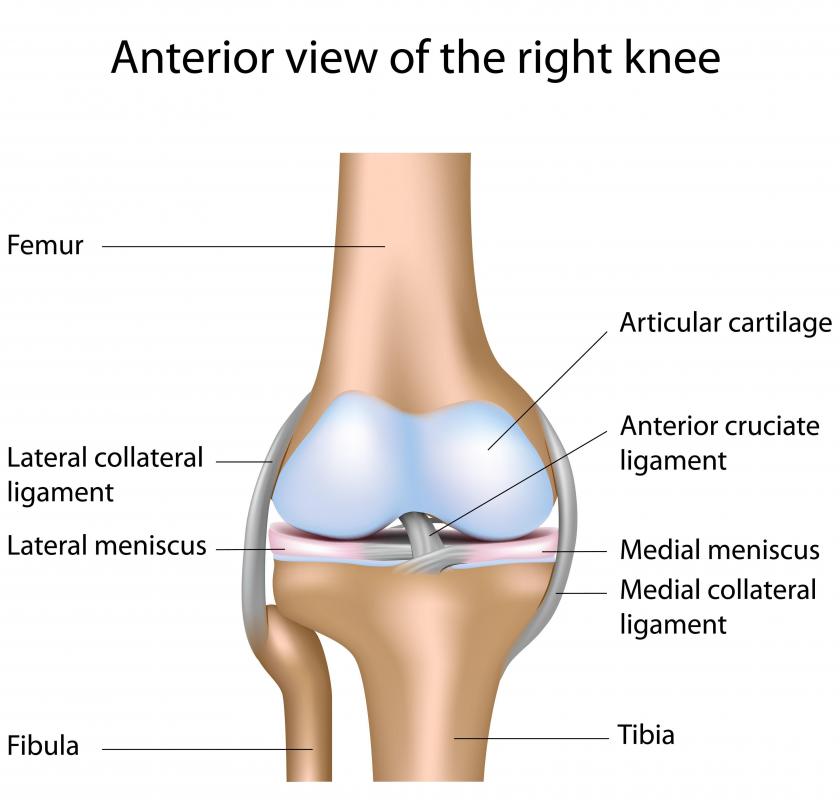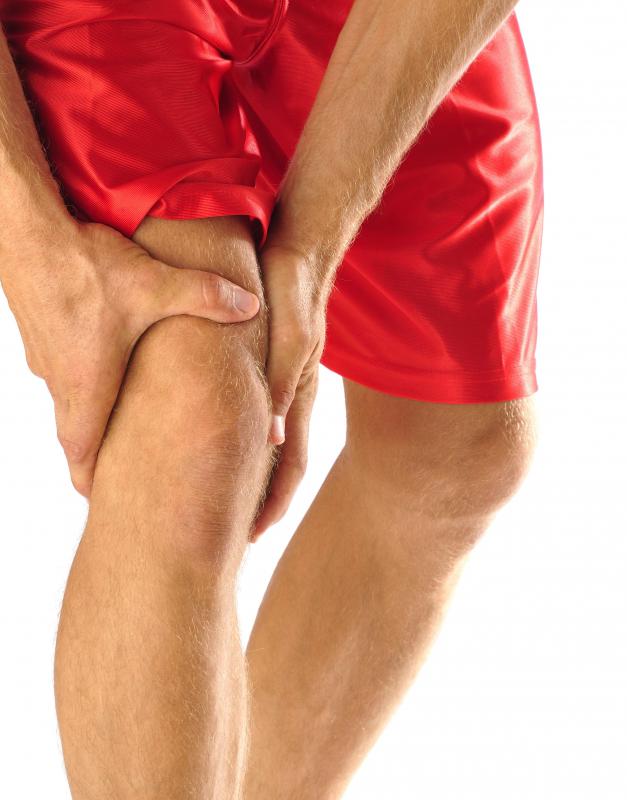At WiseGEEK, we're committed to delivering accurate, trustworthy information. Our expert-authored content is rigorously fact-checked and sourced from credible authorities. Discover how we uphold the highest standards in providing you with reliable knowledge.
How do I Promote Knee Healing?
The best ways to promote knee healing all start with determining what is causing the knee pain in the first place. Treating arthritis, for example, will include different steps than treating an injured ligament, an injured muscle, or a more serious condition such as a fracture. It may be necessary to consult a doctor to find out what is causing the knee pain and determine the best steps for knee healing. In most cases, knee healing can be helped by allowing the joint to rest adequately, by reducing swelling if present, and by conditioning the knee for strength and mobility.
One way to promote knee healing in most cases of knee injury is to employ the RICE treatment. RICE stands for Rest, Icing, Compression, and Elevation. These steps allow the damaged elements of the knee to begin repairing themselves naturally, and they also help reduce swelling and inflammation, thereby reducing pain and accelerating healing time. The RICE treatment should be used immediately after an injury occurs, and it may be used for several days or even weeks afterward.

A good way to promote knee healing in most cases is to exercise the knee regularly and properly. Injuries are more likely to occur in muscles and ligaments that are poorly conditioned, weak, or tight. Using the joint regularly will ensure it is conditioned and mobility is increased or maintained. If pain is felt during exercise, however, you should stop the exercise and try to determine what has caused the pain. Certain conditions can cause degradation of the joints, and when the joint is used, pain may be felt due to such degradation. Arthritis, for example, can lead to degradation of cartilage and bone within the joint, leading to pain during exercise or regular daily movement. There is no cure for arthritis, but steps can be taken to slow its progress and manage pain.

Tendinitis occurs when tendons that attach muscles to bone become inflamed for any reason. Treating the cause of the tendinitis can help promote knee healing; in some cases, it may be necessary to see a doctor who can prescribe anti-inflammatory medications and/or painkillers. Once the inflammation has subsided, it is important to exercise the knee regularly and properly, take dietary supplements that will promote muscle, tendon, and ligament health, and address any issues that may have been responsible for causing the tendinitis in the first place.
AS FEATURED ON:
AS FEATURED ON:
















Discuss this Article
Post your comments